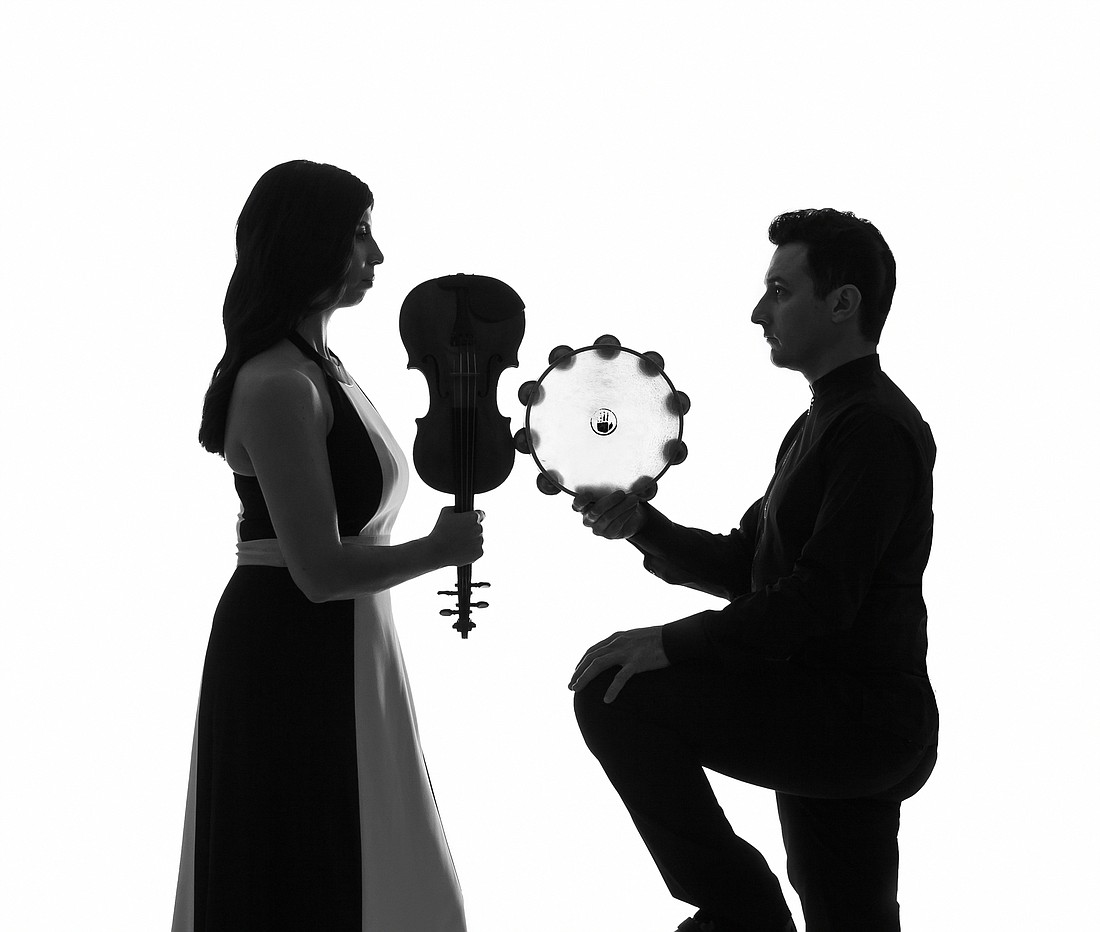- March 16, 2025
-
-
Loading

For the three years of its existence, ensemblenewSRQ has provided its audience with the best of contemporary, new or recent music (however you wish to name it), with the best musicians from Sarasota and elsewhere. Co-Artistic Directors George Nickson and Samantha Bennett have new music tentacles that reach from Lenox, Mass., to New York to the West Coast to South Florida, and we who make up their audience are the beneficiaries of their eclectic taste.
This season alone has featured the music of Steve Reich, Luciano Berio, Kevin Puts, Matthew Aucoin, Elliott Carter and many others, including a world premiere percussion concerto by Andreia Pinto Correia.
The final concert on April 22 began with a clown playing trombone. Aside from the visual and musical shock and surprise, this was serious business, since the music was Luciano Berio’s Sequenza V for Trombone. The clown involved was Brad Williams, principal trombone of the Sarasota Orchestra, who is certainly no clown when it comes to mastery of his instrument.
Berio’s Sequenzas are a series of 14-some pieces for solo instruments and voice that are designed to push both the instrument and performer to their outer limits and possibilities. Earlier this season oboist Nicholas Arbolino performed the Sequenza for Oboe, but Sequenza V was much different.
Berio wrote this piece in the memory of Grock, the Swiss entertainer known as “the king of clowns”; hence the clown costume, which had Williams dressed in a red curly wig, full clown makeup, oversized shoes, and too-large tailcoat, entering from the back of the audience. Utilizing just about every sound possible for trombone from low pedal tones to screeching high notes, sometimes humming and singing (!) with his playing, Williams performed this piece to perfection.
John Harbison’s String Quartet No. 6 (2016) featured Bennett as soloist and first violin, with Jennifer Best Takeda, violin, Michael McClelland, viola, and Claire Solomon, cello. The work started with Bennett apart from the rest of the group, showing both a temperamental and psychological detachment. As the movements progressed, she gradually moved forward, first only halfway, then finally being seated with the other three players in the final movement.
At once angular, yet basically diatonic, Harbison’s score is at times plaintive and pleading, but as Bennett moved closer to the group, the music became a bit more lyrical and diatonic. In the final movement, both soloist and trio were again at musical odds, with a plethora of dynamic - almost angry - double stops and vigorous pizzicato passages.
This work is basically a concerto for the first violin, and Bennett had performed the premiere of the work at Tanglewood Music Center a year or so ago. Here she and her colleagues gave a performance that beautifully captured the many moods of the piece.
Closing the concert and the season was the world premiere of Correria’s “Pintures” (Paintings in Four Movements), a concerto for percussion and small orchestra, which is loosely based on the writings of Catalan painter Joan Miró. Commissioned by ensemblenewSRQ, the concerto uses virtually every possible instrument in the percussion family, plus a few extras, to illustrate the somewhat revolutionary painting methods of Miró.
Two Tam Tams, tuned gongs, xylophone, marimba, vibraphone, tympani, wood blocks, chimes, several kinds of mallets, jazzy wire brushes and a violin bow on cymbal and vibraphone bars were used by Nickson and percussionist Tomasz Kowalczyk, augmenting the 16 orchestral players, ably conducted by Stilian Kirov.
Together they produced a series of sonic vistas, tone clusters and impressions, punctuated and at times interrupted by the ever-aggressive writing for the various percussion instruments. Nickson was virtually three people, with at least that many pair of hands, as he moved deftly and expertly from instrument to instrument in what was definitely a choreographic as well as instrumental tour de force. The audience loved it and responded with an extended standing ovation.
It was quite an ending for an ambitious and well-performed season, leaving everyone in anticipation of what ensemblenewSRQ has in store for us in its fourth season.